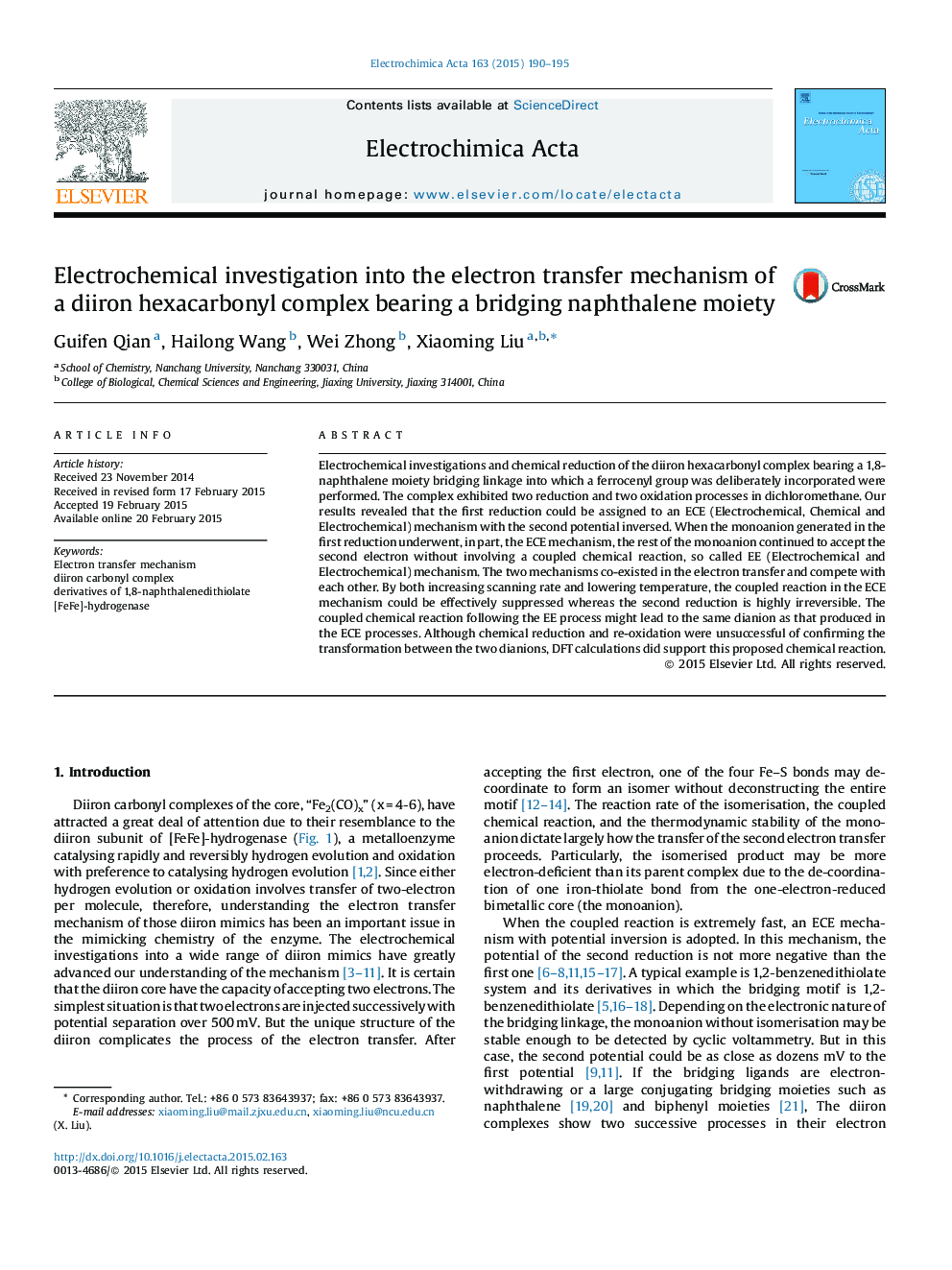| کد مقاله | کد نشریه | سال انتشار | مقاله انگلیسی | نسخه تمام متن |
|---|---|---|---|---|
| 184063 | 459567 | 2015 | 6 صفحه PDF | دانلود رایگان |
• A diiron hexacarbonyl complex with naphthalene moiety as its bridging linkage.
• In the electron transfer, both ECE and EE pathways co-exist.
• In the ECE process, the second reduction potential is inversed, not more negative than the first one.
Electrochemical investigations and chemical reduction of the diiron hexacarbonyl complex bearing a 1,8-naphthalene moiety bridging linkage into which a ferrocenyl group was deliberately incorporated were performed. The complex exhibited two reduction and two oxidation processes in dichloromethane. Our results revealed that the first reduction could be assigned to an ECE (Electrochemical, Chemical and Electrochemical) mechanism with the second potential inversed. When the monoanion generated in the first reduction underwent, in part, the ECE mechanism, the rest of the monoanion continued to accept the second electron without involving a coupled chemical reaction, so called EE (Electrochemical and Electrochemical) mechanism. The two mechanisms co-existed in the electron transfer and compete with each other. By both increasing scanning rate and lowering temperature, the coupled reaction in the ECE mechanism could be effectively suppressed whereas the second reduction is highly irreversible. The coupled chemical reaction following the EE process might lead to the same dianion as that produced in the ECE processes. Although chemical reduction and re-oxidation were unsuccessful of confirming the transformation between the two dianions, DFT calculations did support this proposed chemical reaction.
The electron transfer of a diiron hexacarbonyl complex with naphthalene moiety as its bridging linkage undergoes both ECE and EE pathways. In the ECE process, the second reduction potential is inversed, not more negative than the first one, and the dianion derived from the EE process may isomerise to that generated from the ECE process.Figure optionsDownload as PowerPoint slide
Journal: Electrochimica Acta - Volume 163, 1 May 2015, Pages 190–195
